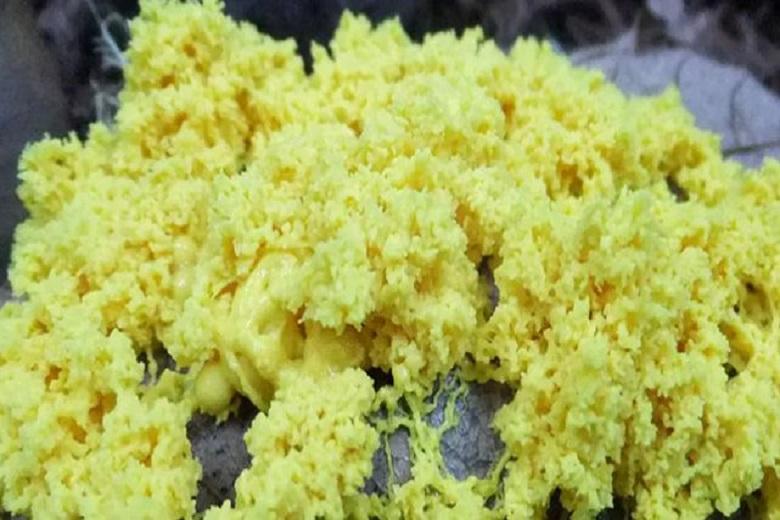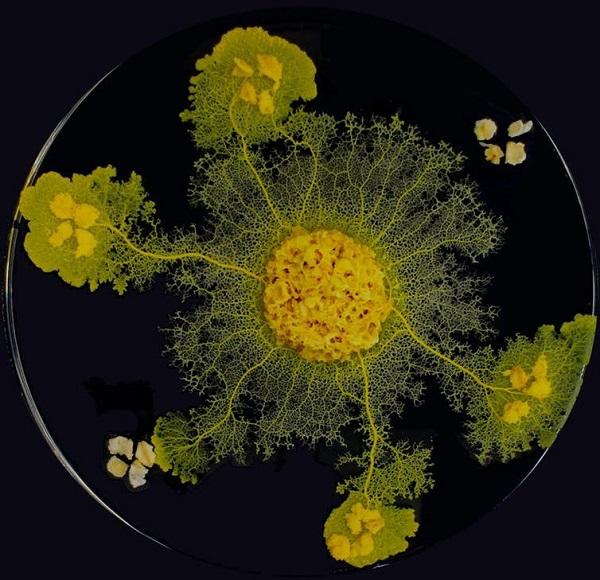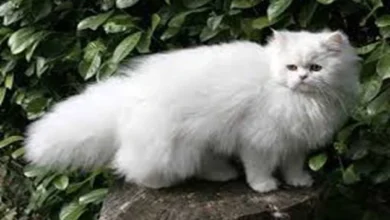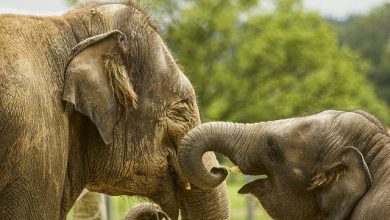The blob: a mysterious creature with primitive intelligence

Blobs are actually unicellular organisms, no fungus, no animal, no vegetable. They are part of the reign of amibozoans, which groups together shapeless organisms moving with outgrowths called pseudopods. The first blobs appeared on earth a billion years ago. The blob is composed of a cell, but it can reach several meters in diameter. A human cell measures on average ten micrometres in diameter, ten million times less. How is it possible?
May 26, 1973, in the morning near Dallas: Marie Harris discovers in her garden a strange thing that she describes as “sparkling, creamy and pale yellow, similar to an omelette, no bigger than a cookie”. She thinks it is a mushroom. But, two weeks after her discovery, Marie realizes that the thing has reached the size of sixteen cookies! She decides to get rid of it with a rake and scatter it in her garden.

Two days later, leaning out of the window, she realizes with surprise that the thing has regenerated and doubled in size. Disappointed, Marie appeals to her husband, who crushes the intruder with a stick. A week later, the thing is back, always bigger. Marie then decides to poison it with a herbicide. The thing then begins to bleed a red liquid. But the day after, the thing is still there, determined to get ingrained.
Marie decides to call the firefighters who bombard the thing with high-pressure water and the police who dug the intruder with rifles (we are in Texas!). But nothing to do: the thing seems indestructible and continues to grow. The couple is seeing their ruined garden surrenders to despair when suddenly the intruder disappears overnight without leaving a trace. There was nothing more to conclude with the passage of an extra-terrestrial.
This extra-terrestrial is actually a myxomycete, also called blob in reference to the movie “The Blob” in which an organism resembling an English frost comes from another planet and devours everything in its path. This Texan incident was the first media appearance of the blob.
How is blob possible?
Blobs are actually unicellular organisms, no fungus, no animal, no vegetable. They are part of the reign of amibozoans, which groups together shapeless organisms moving with outgrowths called pseudopods. The first blobs appeared on earth a billion years ago. The blob is composed of a cell, but it can reach several meters in diameter. A human cell measures on average ten micrometres in diameter, ten million times less.
The blob, like us, is the result of the fusion of two sex cells. They are not called ovules or spermatozoa because the blob has… 720 different sexes. Once in a wet environment, these sex cells (called spores) search for a cell of the opposite sex. With more than 720 possibilities, the task is rather easy. When two cells of the opposite sex meet, they merge to become a single cell. But there, unlike us, the cell will not divide, only its core will do. The cell will grow according to the divisions of its nuclei until reaching record sizes.
Where is the blob found?
Blob is found mainly in the shade, in the forests because it hates the light. It is easy to spot it in summer after a downpour, blob affecting heat and humidity. When the environmental conditions are bad (drought, lack of food), the chunk goes into dormancy until the situation improves. He can stay for years.
To wake it up, it simply needs to water them and give them food (its diet consists of bacteria and mushrooms, and in the lab, it loves oatmeal). Incredibly, with each awakening, the blob again becomes young and vigorous. It is, therefore, almost immortal. Let’s continue in the strange, a blob can be cut into multiple pieces that will become autonomous blobs; conversely, genetically identical blobs placed in the same environment are perceived and fused to form a single blob.
What does the blob look like?

It depends on the species. There are circles, arborescent, shapes, roses, yellows, whites, blacks. A thousand species have been identified, but we are certainly far from the count.
The most studied species is Physarum polycephalum. It is bright yellow and shapeless. By looking at it closely, one perceives a mesh of veins in which circulates the protoplasm, “the blood of the blob”. This network makes it possible to distribute all the nutrients and other essential molecules in a minimum of time throughout the cell. The blob is mobile, but rest assured, it will not crawl you after one of your walks in the forest, its top speed being 4 cm per hour.
Are blobs primitively intelligent?
Despite its apparent simplicity, the blob demonstrates a primitive form of intelligence. It can find the shortest path in a labyrinth to form optimized networks or to balance its diet. More surprisingly, we recently discovered that the blob could learn while it has no nervous system.
Simple learning was demonstrated (called habituation). This type of learning allows us to stop responding to unpleasant repetitive but harmless stimulations (noise from cars in the city) while remaining alert to new stimulations (horn). The habit is not eternal, if you move to the country, you will react again to the painful noise of cars.
To study habituation in a blob, salt was used, which is harmless, but blob exegeses. They forced the blob to cross a bridge containing salt to reach food. Once the blob had joined its pittance, the experiment was started again. The first time the blob crosses the bridge, it is clearly going backwards and takes more than 10 hours to cross the bridge.
The blob takes less and less time to complete the journey in less than 2 hours during the following crossings. Once the chunk was accustomed to salt, we verified that this habituation was salt-specific. Therefore, it forced the blob to cross a bridge containing caffeine, another substance that the blob exacerbates. The chunk took an eternity to cross the bridge. It wasn’t used to any unpleasant substances. After a well-deserved rest, they tested the blob with salt again. He then behaved like the first crossing. The habituation was not eternal.
Knowing that blobs can merge: can a blob transfer knowledge to a naive congener?
They have therefore merged a blob accustomed to salt with a naive blob. After the fusion, the blobs are separated and tested individually. Surprise! The naive blobs cross the bridge quickly and behave like blobs accustomed to salt. By observing the blobs closely during fusion, it is observed that a vein is formed between the two blobs allowing the exchange of information.
These experiments demonstrate for the first time that a unicellular can learn without having a brain and that he can share his knowledge! These pioneering experiments shake everything that we thought we knew about the intelligence of the living. The big adventure of the blob is just beginning.




